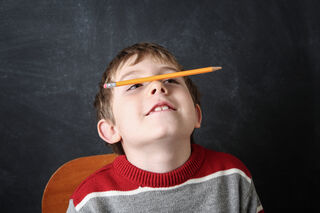ADHD
7 Essentials for Kids With ADHD Who Are Learning Remotely
Stop struggling and start strategizing.
Posted September 28, 2020

National data on remote learning is scarce, but it's no secret that it is just not working. Children, tweens, and teens are sleeping during class, crying out in frustration, not paying attention, fearful of participating, or worse, not attending online classes. Parents are just about ready to throw in the towel, and faculty members struggle to engage their students throughout the day. Everyone is mentally, physically, and emotionally exhausted; yet the school year carries on.
Unfortunately, parents of children and teens diagnosed with Attention Deficit Hyperactivity Disorder (ADHD) or executive functioning deficits know this struggle all too well. School is where children and teens with ADHD already have difficulty focusing, sitting still, organizing, and staying on task. Imagine removing the structure and accommodations that only a classroom environment can provide?
But is the classroom the only environment that can offer the ideal climate conducive to learning for kids with ADHD? Maybe not. Below you will find a list of seven essentials that I've handpicked to help out with the school day—tried and true!
1. Wobble Chair
Children with ADHD, precisely the Hyperactive type, have an immense amount of energy and a tremendous amount of difficulty sitting still for long periods. Teachers will often report that they will stand up from their seats during class, squirm and kick chair legs or desks.
Although this behavior is disruptive to the teacher and peers, it may be necessary for optimal cognitive performance on the ADHD child's part. Yes, some children and teens with ADHD need to be in a state of motion to absorb and understand information learned in the classroom. A 2015 UC Davis study purported that being in motion may increase arousal levels, leading to better concentration and focus.
You read correctly; we shouldn't try to keep them still, nor should we punish them for being unable to stop. The study stated, "…when a child with ADHD is using more cognitive resources, they are more likely to be engaging in physical activity." Instead of looking at fidgeting as "disruptive behavior," let's look at it as a clear signal that our children are asking for more physical movement.
2. Standing Desk
Ah, the controversial standing desk. It is my personal belief that every classroom should have standing desks, as 60% of a child's day is spent sitting down. Have you read the data about being sedentary for hours on end? It's not only detrimental to adult's health but children and teens as well. I'll spare you the time of research; a 2015 study found that a three-hour period of uninterrupted sitting causes a 33% reduction in young girls' vascular function. In other words, sitting disrupted blood flow and their arteries. Sitting for long periods of time is also a well-known culprit is rising rates of obesity, shortened life span, heart disease, and the list goes on. For kids with ADHD, the standing desk is the perfect opportunity to relieve symptoms without interfering with the classroom.
3. Chair Bands
Have a child that struggles with hyperactivity and can't seem to stop moving their feet? Then chair bands are one of the most simple and practical resources that you could use. Simply stretch the thick rubber band around the legs of the chair and keep those fidgeting feet busy! They're mostly noise-free, can increase focus, reduce anxiety, and produce a sense of calm for the ADHD student.
4. Study Carrel
A study Carrel creates a private and compact workstation for kids. Instead of purchasing a desk, buy a three-panel desktop poster board which works just as well. Study carrels are cost-effective, encourage attention, focus, and limit visual distractions.
5. Watches That Promote Focus and Concentration
If your child is having difficulty staying on task, several watches are available on the market that track focus, attention, and exercise. These watches deliver text "reminders" to complete assignments, stay on task, and remain focused. Some watches even provide apps that parents can use to monitor their child's progress focusing.
6. Timer Dry Erase Board
It's been well documented that children with ADHD may have time perception deficits. Visual timers can be game-changers for kids with ADHD and lifesavers for parents. If your child needs help with time management, being productive, or staying on schedule with homework, a dry erase board with a timer is sure to help.
7. Fidget Toy
Silent fidget toys will keep children's and teens' hands busy while expending some of that nervous energy. A 2018 study even found that fidget spinners have a short-term favorable effect on fine motor control.
Positive Parenting
Finally, don't forget to praise your child or teen authentically when they use any of these products successfully. The CDC recommends that "parents help their child think about their own accomplishments. Saying "you must be proud of yourself" rather than simply "I'm proud of you" can encourage your child to make good choices when nobody is around to praise them." Remember, the more you notice and acknowledge your child exhibiting the intended behavior, the more likely it is for that behavior to continue.
Be Well,
Dr. K




